Details
Please consider that the s*IoT modelling framework is an intermediary state at an early stage of an ongoing project.
Modelling Framework
Motivated by the close integration of humans and technoloy in the digital transformation age, a three layer architecture has been proposed that specialize the design science paradigm in information systems. The three layers are the scenario layer, the modellin layer, and the execution layer. To facilitate the integration of humans and technoloy, mutual artefacts on the modelling layer are derived from the conceptualization of mental models on the scenario layer and the operation of cyber physical systems on the execution layer. In detail, design concepts from design thinking are decomposed in conceptual models, functional capabilities from cyber physical systems are abstracted in execution environments, and both are composed in "smart" models.
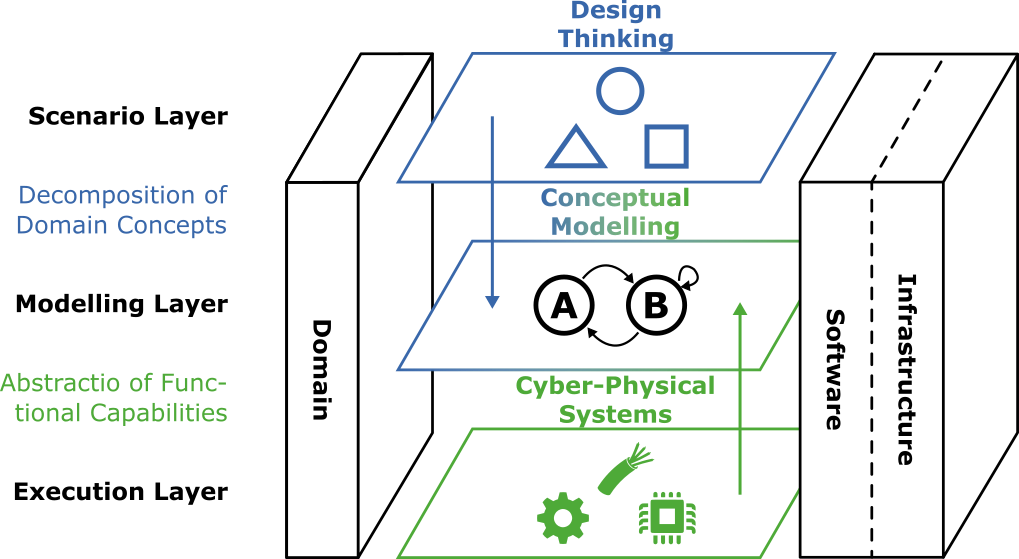
To build "smart" models, the composition of conceptual models and execution environments relies on a transformation of knowledge. To generalize the poblem, the modelling layer is structured in a modelling hierarchy. Artefacts on the abstract end of the modelling hierarchy - design methodologies, metamodels, and modelling methods - cover invariants of both, conceptual models and execution environments. Thereby, a metamodel is the direct models of a modelling method which can be deployed a modelling tool.
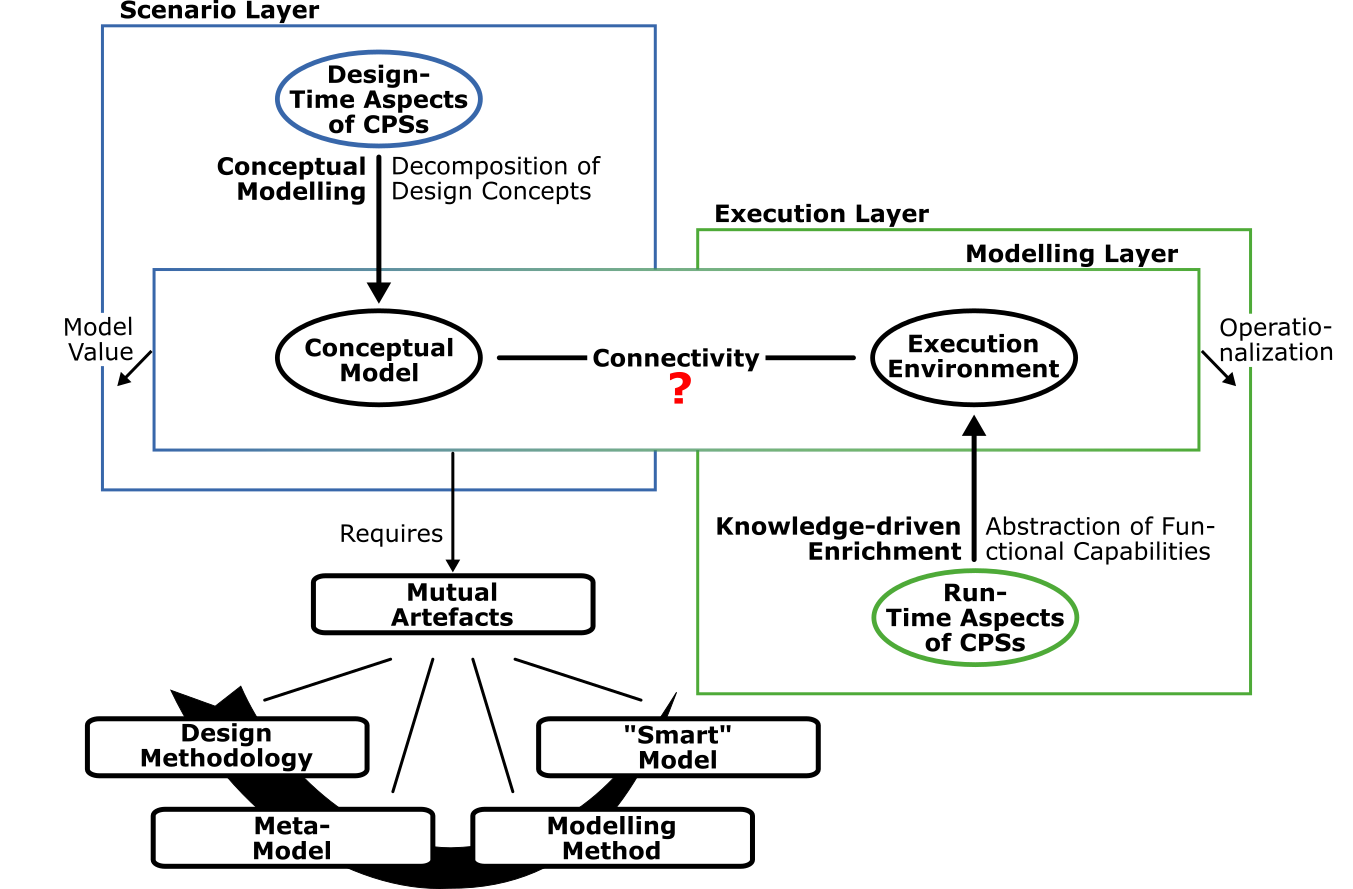
Methodology
ToDo
Metamodel
the s*IoT metamodel is illustrated in 5 levels of detail. The first level shows the abstract concepts that are necessary for connectivity between design thinking and CPSs. The second level shows concepts on the modelling layer for conceptual models that decompose the scenario layer, for execution environments that abstract the execution layer, and for "smart" models that connect conceptual models and execution environments. The third layer shows the relation of modeltypes that realize the concepts from the second layer. The fourth layer shows concepts from the s*IoT modelling method that realizes selected modeltypes from the third Layer. The fifth layer is the implementation of selected concepts, which can be found under Tool-Download. A coresponding ADL file is available.
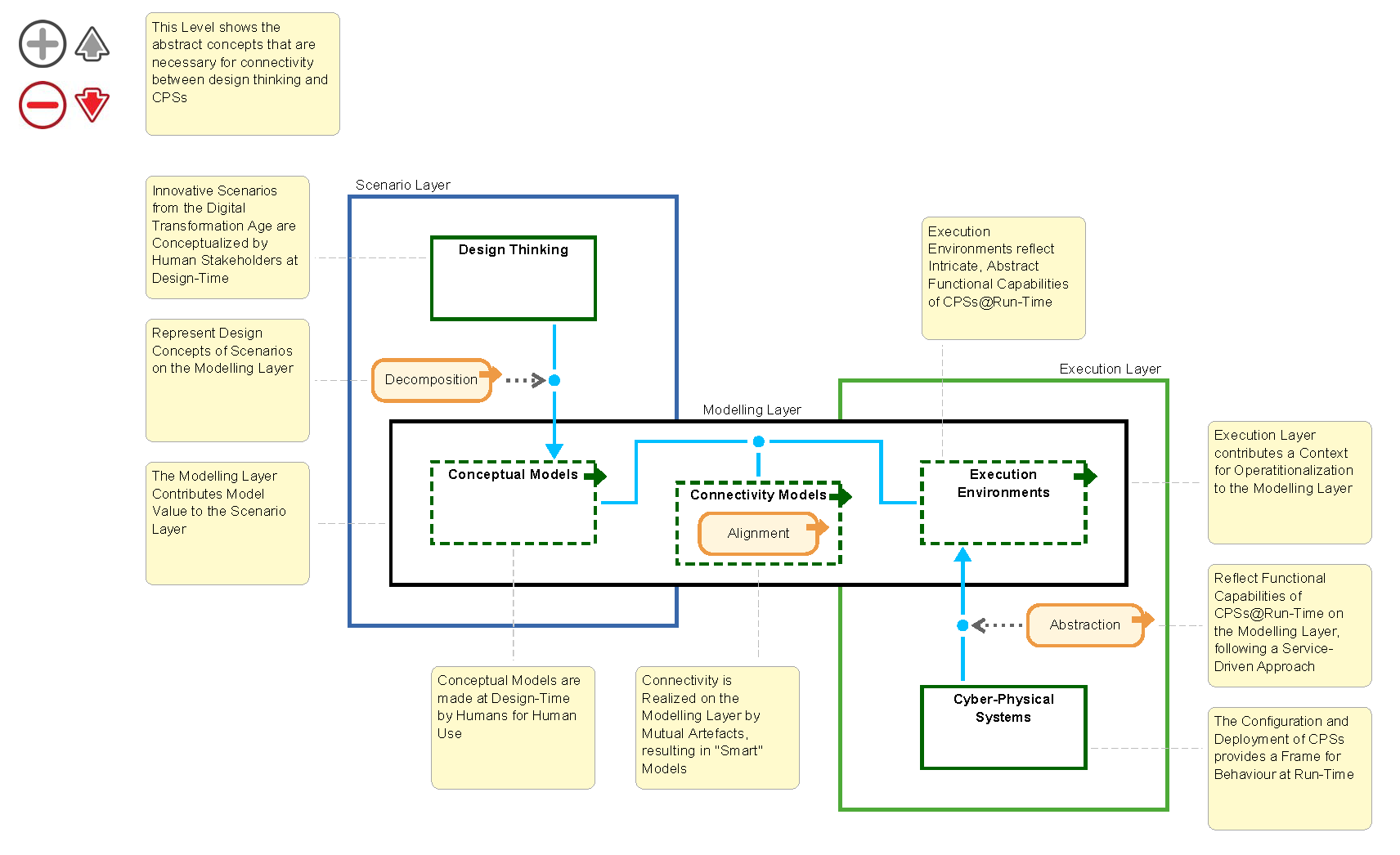
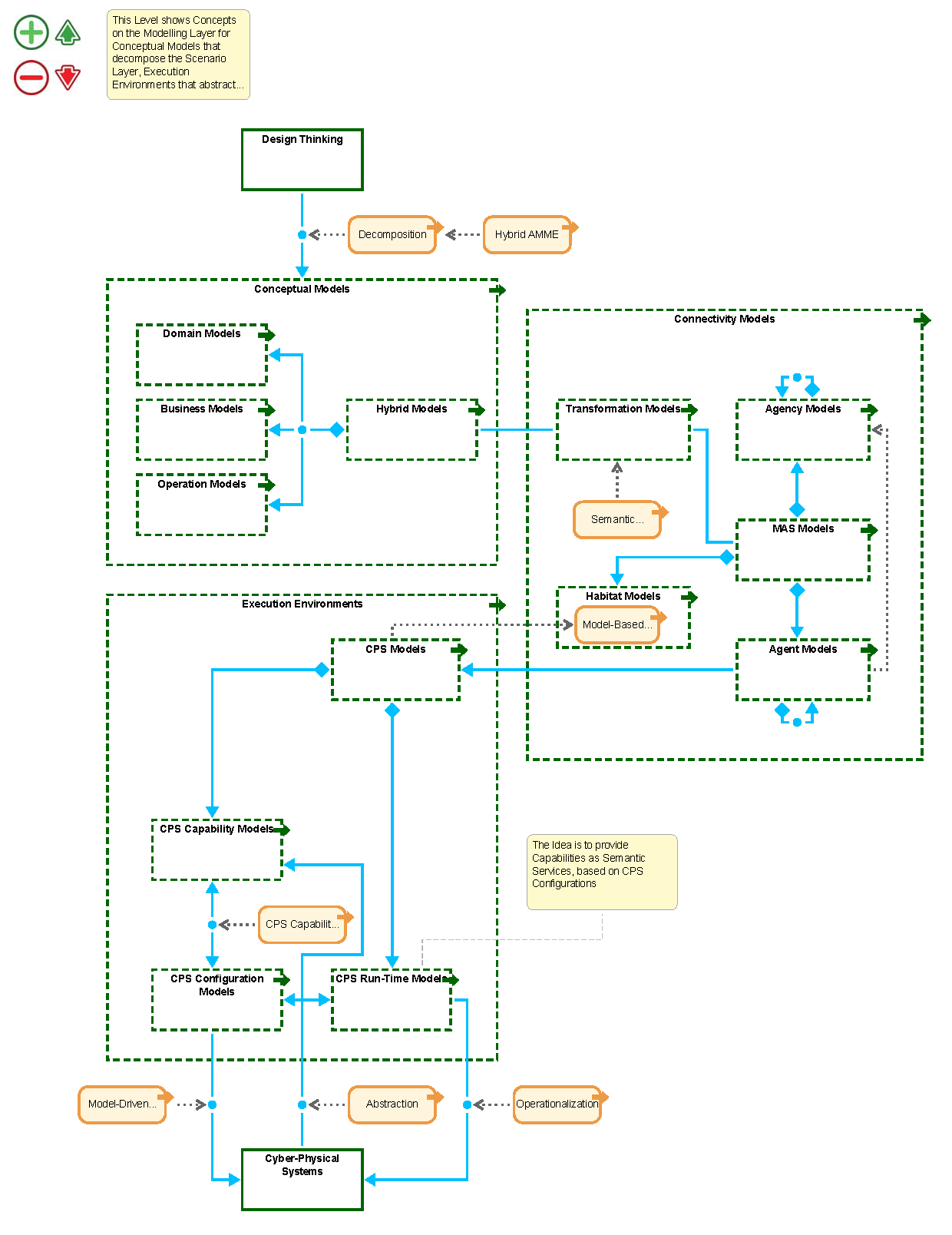
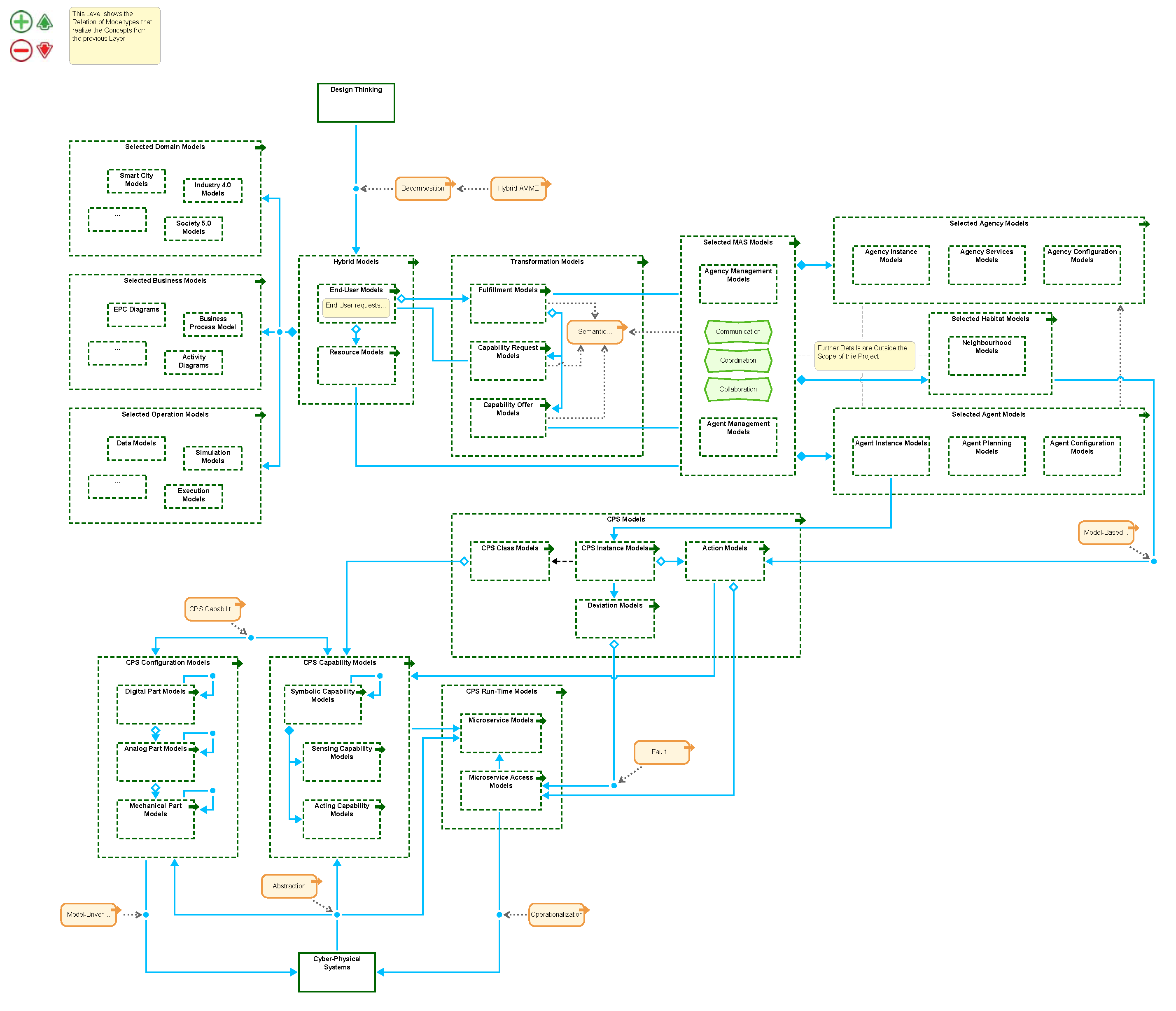
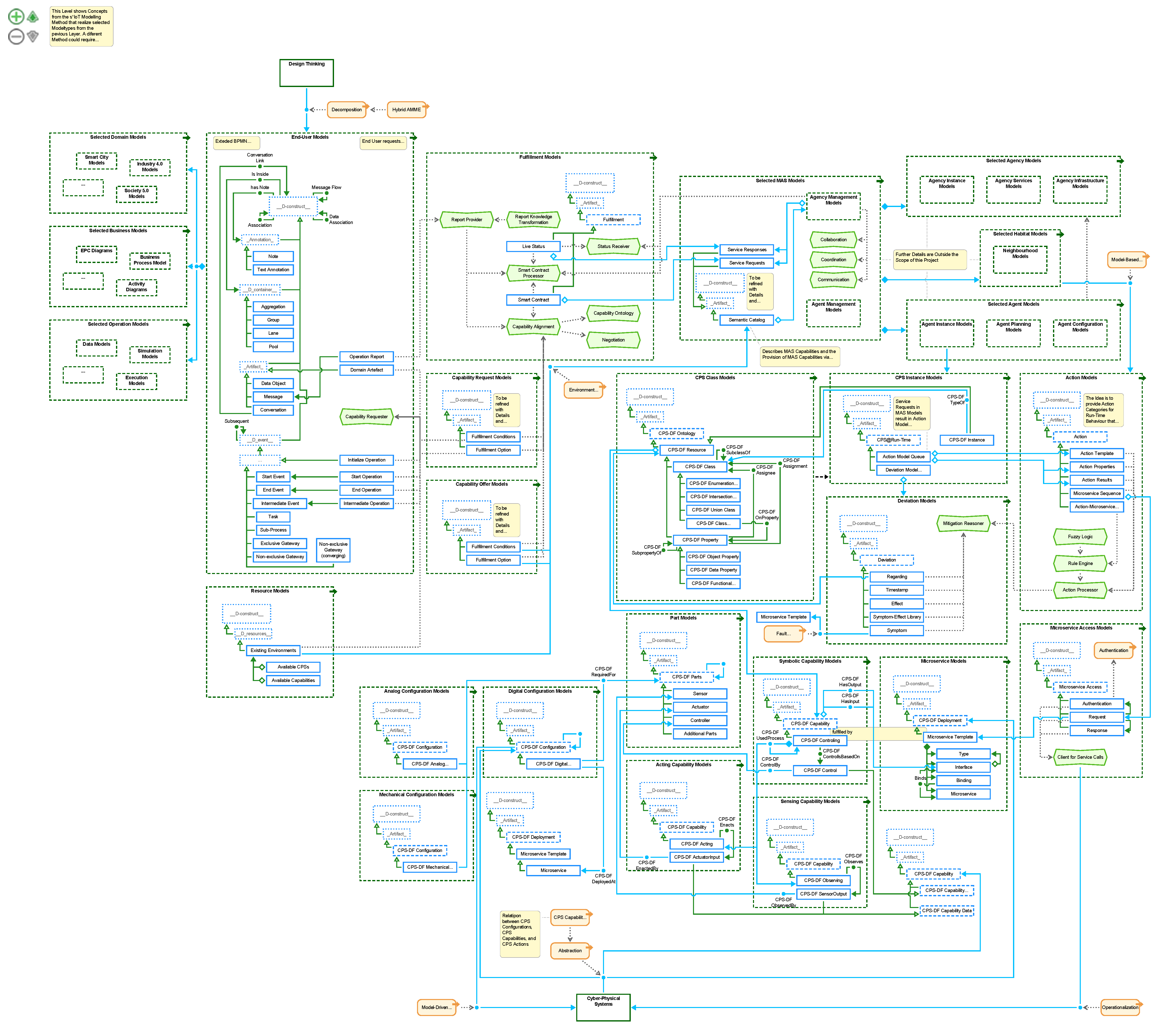
s*IoT Modelling Method and Tool
ToDo
Case Study
ToDo


